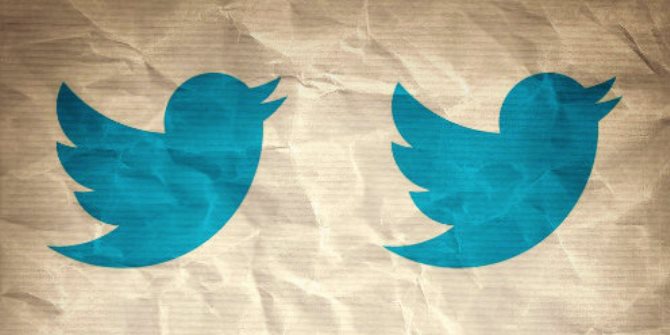Payal Kamat describes how political campaigns ahead of India’s general elections are learning from US President Barack Obama’s tactics and focusing on online platforms.
During his visit to Hyderabad in September last year, BJP’s prime ministerial candidate Narendra Modi chanted US President Barack Obama’s 2008 rallying cry, ‘Yes We Can’, in a public meeting. This was the most striking example to date of the Obamafication of Indian political campaigns. As India’s 2014 general elections approach, it is clear that Obama’s much-lauded and analysed campaign methods have influenced political campaign communication in the Indian electoral race.
In the book “Global Political Campaigning“, Fritz Plasser analyses the Americanisation of political campaigns across the globe, explaining American trends and successful methods that are ‘adopted’ by other countries and appropriated to the national context. One model within this trend of Americanisation is the ‘shopping’ model, which refers to the import of professional campaign techniques from the United States “which are then modified and implemented taking the national context of political competition into account.” A look at how Indian political parties are designing their online election campaigns suggests that they’ve been shopping quite a bit, and mostly from the Obama store.
Many aspects of Modi’s campaign are directly inspired by Obama’s winning tactics. Here are some examples:
- Under Chris Hughes’ leadership, the Obama campaign team created the brand MyBO, with the tagline ‘Keep it real and keep it local’. MyBO merchandise flooded the market ahead of US elections to entice voters. Similarly, Modi has launched the NaMo store (Narendra Modi Store) online, which sells merchandise inspired by Modi’s life and values.
- The Barack Obama Dashboard, a national online platform for organising volunteers, was introduced during Obama’s 2012 re-election campaign. The site ranked campaign volunteers and supporters on a point-based system to better strategise recruitment and organise grassroots events. The winning volunteer was rewarded with direct interaction with Obama. In September 2013, Team Modi launched the ‘India 272+’ initiative, which resembles the Obama Dashboard. It also has a points-based system to rank volunteers who can mobilise voters on ground, and the ‘winner’ will participate in a one-on-one meeting with Modi.
- During his re-election bid in January 2012, Obama participated in a Google Plus Hangout, which included an “Ask Me Anything” question and answer session. Up to 200,000 people logged in to the live session with the president. Taking a cue from that success, Modi in September 2012 participated in a Google Plus Hangout, which drew 20,000 questions and was viewed by nearly four million people on the web and TV.
- To engage diverse voters, Team Obama created separate Twitter accounts for separate states. Team Modi too has set up Twitter accounts in Assamese, Kannada, Manipuri, Telugu, Malayalam, Oriya, Marathi and other Indian languages. In his rallies outside the Hindi-speaking belt, Modi uses insights gathered from these Twitter account to construct his speeches.
Modi and the BJP are not the only ones learning from Obama’s campaign strategies. For two years before Obama’s electoral win, his campaign organised thousands of paid staffers to fan out across battleground states to register and persuade Obama supporters and get them to vote on election day – it was called the ‘ground game’. The Aam Aadmi Party (AAP) implemented a volunteer-driven campaign like Obama’s during the Delhi state election, which was managed online. The AAP created a large support base of online volunteers who were tasked with speaking to at least 20 voters per day. This online volunteer campaign continues to be AAP’s key communications methodology for its general elections campaign. AAP’s fundraising techniques also resemble those of the Obama campaign, and are driven both by small-time and large contributions that are mobilised online.
The Congress Party candidate from Bangalore South constituency, Nandan Nilekani, has also tapped into online platforms to spread his message in the IT capital of India. His ‘ideas for Bengaluru’ campaign on Twitter that invites suggestions for the city’s improvement mirrors Obama’s micro-listening approach of parsing constituents’ concerns in fine detail. Similarly, Rahul Gandhi, Congress’ campaign leader, is adopting the micro-listening approach offline by conducting interactions with small groups and ‘hearing them out’.
When the UK-based political communication scholars Anstead and Chadwick studied Obama’s internet campaign and the feasibility of its application in parliamentary democracies such as the UK, their research indicated that successful re-application of Obama’s campaign strategies would be minimum. They suggest that the United States’ institutional structures such as the presidential system and candidate-centric approach enable the success of online campaigns more so than Britain’s institutional structure of the parliamentary system and party-centric approach. In this context, the Obamafication of Indian political campaigns, despite the fact that India’s parliamentary democracy, much like the UK, is less suited to online and interactive campaigns, is an exciting development.
While traditional campaigning continues dominate in India, online campaigns have received phenomenal attention. Overall internet penetration in India is only 15 per cent of the population, but the Obamafied campaigns are largely aimed at the huge base of young voters, many of them headed to the polls for the first time, and counting approximately 144 million of the electorate. The party that converts these online voters into offline votes on election day will be at a significant advantage. Obama won the 2008 US election this way. The political party that replicates his successes in India in 2014 will have truly Obamafied its campaign, both in terms of strategy and victory.
Payal Kamat completed a MSc. in Political Communication at LSE’s Department of Media and Communications in 2012. She currently works with Perfect Relations in India, which handles campaigns and develops communications strategies for candidates and political parties.
References
Anstead, N. and Chadwick, A. (2009) “Parties, Election Campaigning and the Internet: Towards an Institutional Approach”. In: A. Chadwick & P. Howard, eds. Handbook of Internet Politics. Abingdon: Routledge.








Payal Kamat’s article helps to confirm what I have been noticing about this campaign. It will be interesting to see how Indian electioneering via social media and the web will impact on voting manners.
To wit, a Times of India survey of what is required for good governance, found strong support for single party rule as opposed to coalitions, that has been the case since 1991. Whether social media can effect this outcome will be interesting because access to this platform is the domain of urban middle and upper class, who have often been criticized for being too apathetic in recent elections, given the non-compulsary nature of Indian voting system.
We need some skilled people in the political field.